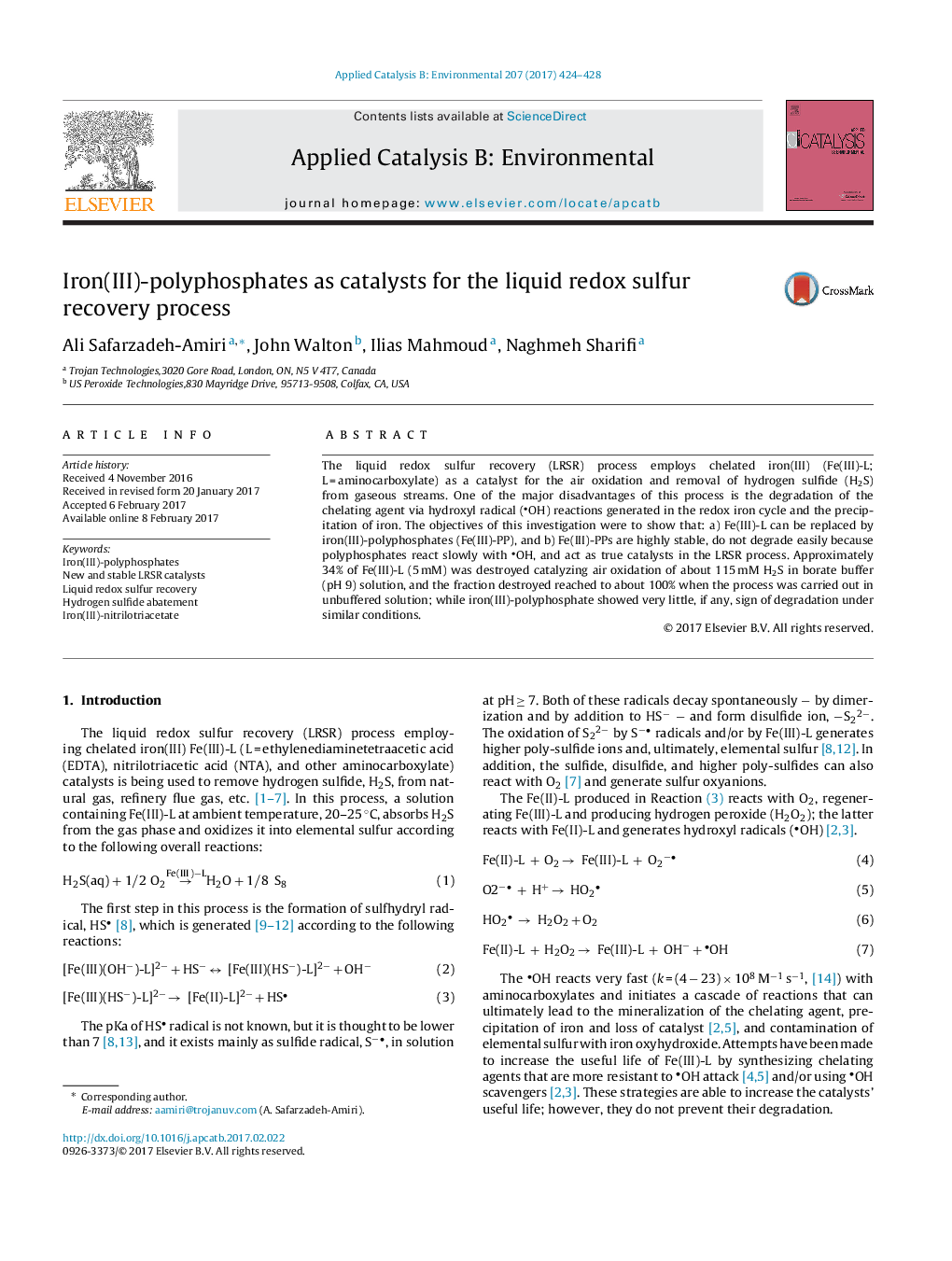| Article ID | Journal | Published Year | Pages | File Type |
|---|---|---|---|---|
| 6454116 | Applied Catalysis B: Environmental | 2017 | 5 Pages |
â¢Iron(III)-Polyphosphates (Fe(III)-PP) act as true catalysts for the liquid redox sulfur recovery (LRSR) process.â¢These catalysts are highly stable and are expected to last for a very long time.â¢The sulfur recovered employing Fe(III)-PP catalysts will be iron-free.
The liquid redox sulfur recovery (LRSR) process employs chelated iron(III) (Fe(III)-L; LÂ =Â aminocarboxylate) as a catalyst for the air oxidation and removal of hydrogen sulfide (H2S) from gaseous streams. One of the major disadvantages of this process is the degradation of the chelating agent via hydroxyl radical (OH) reactions generated in the redox iron cycle and the precipitation of iron. The objectives of this investigation were to show that: a) Fe(III)-L can be replaced by iron(III)-polyphosphates (Fe(III)-PP), and b) Fe(III)-PPs are highly stable, do not degrade easily because polyphosphates react slowly with OH, and act as true catalysts in the LRSR process. Approximately 34% of Fe(III)-L (5Â mM) was destroyed catalyzing air oxidation of about 115Â mM H2S in borate buffer (pH 9) solution, and the fraction destroyed reached to about 100% when the process was carried out in unbuffered solution; while iron(III)-polyphosphate showed very little, if any, sign of degradation under similar conditions.
Graphical abstractDownload high-res image (73KB)Download full-size image
